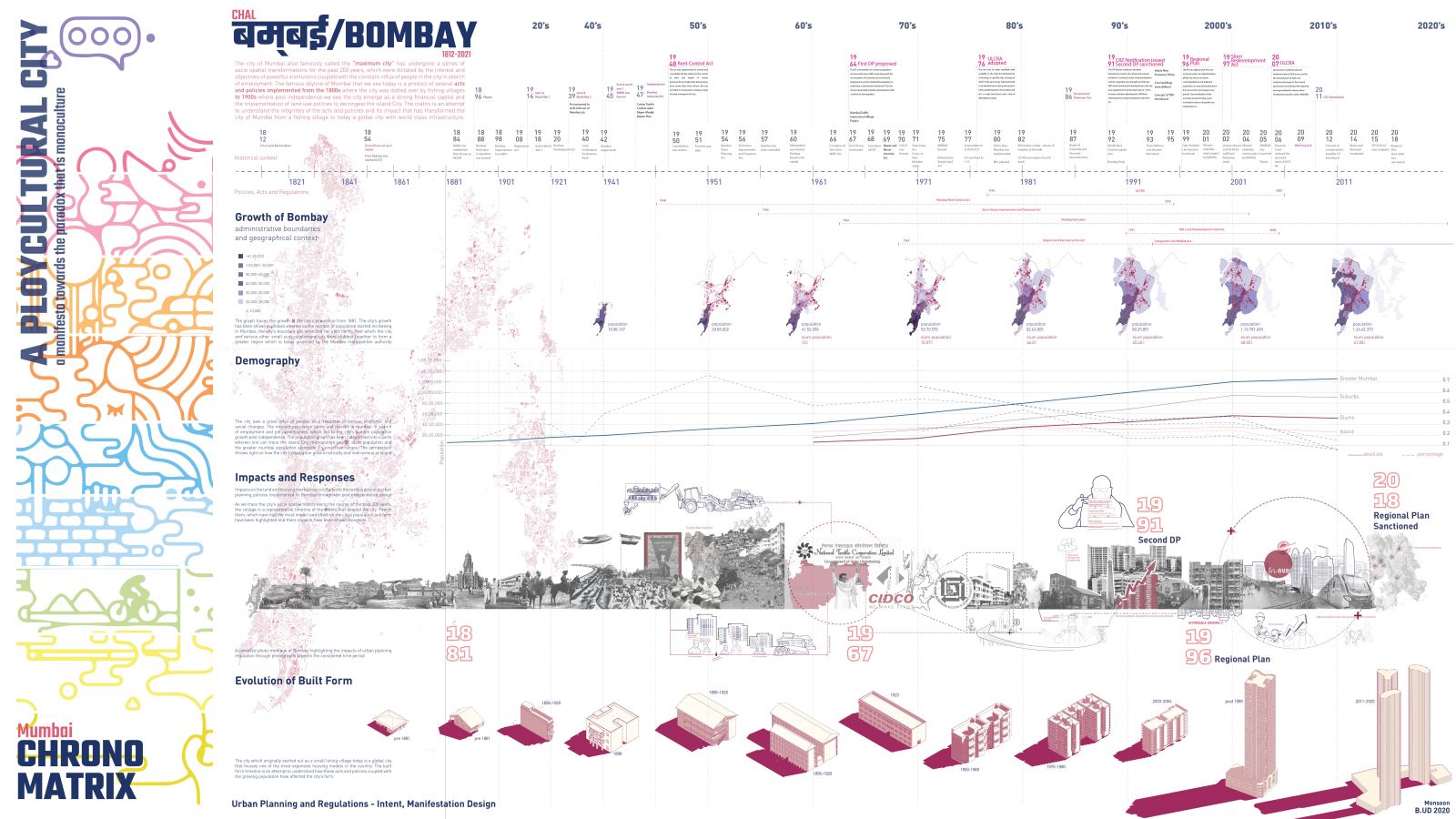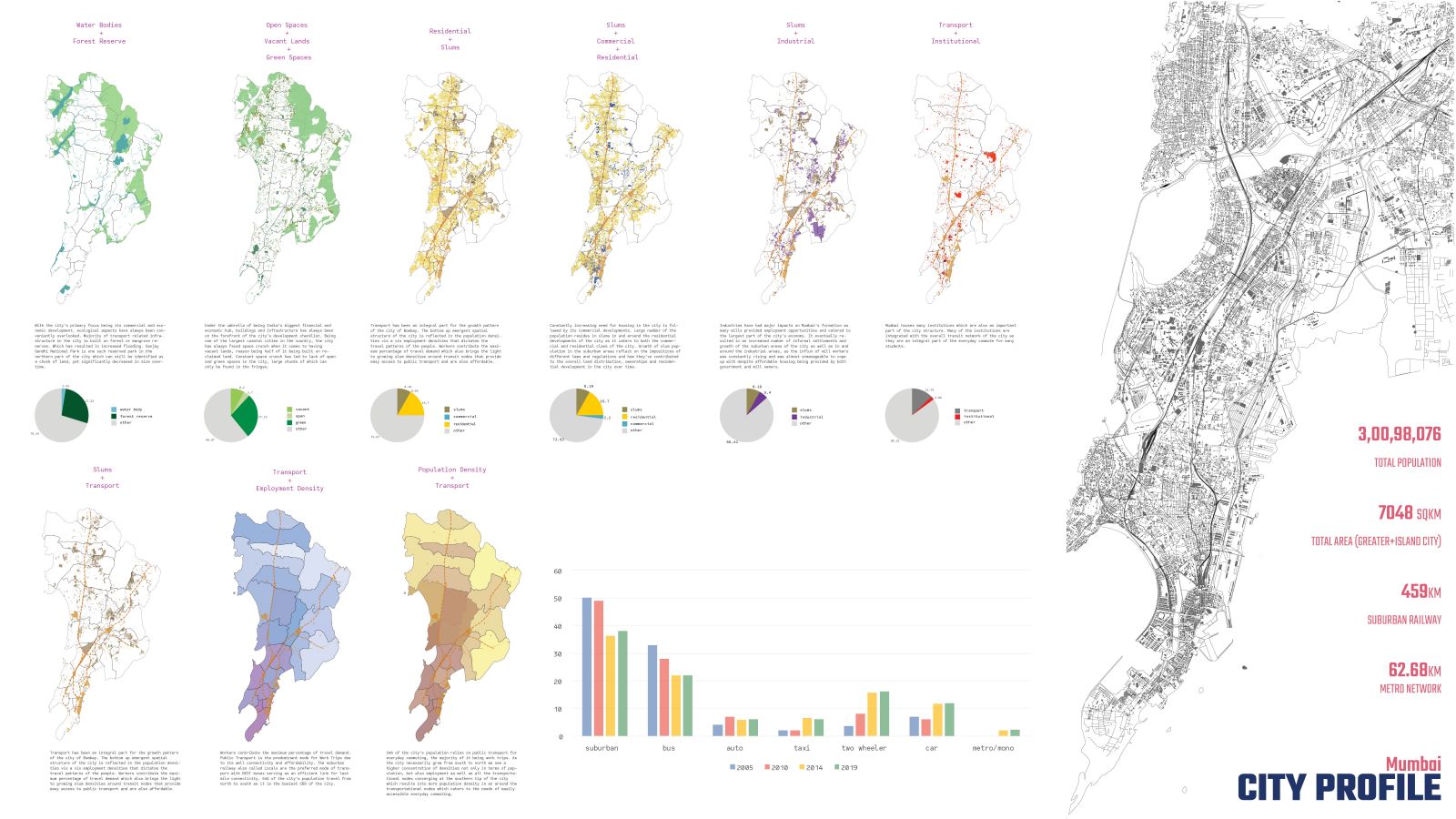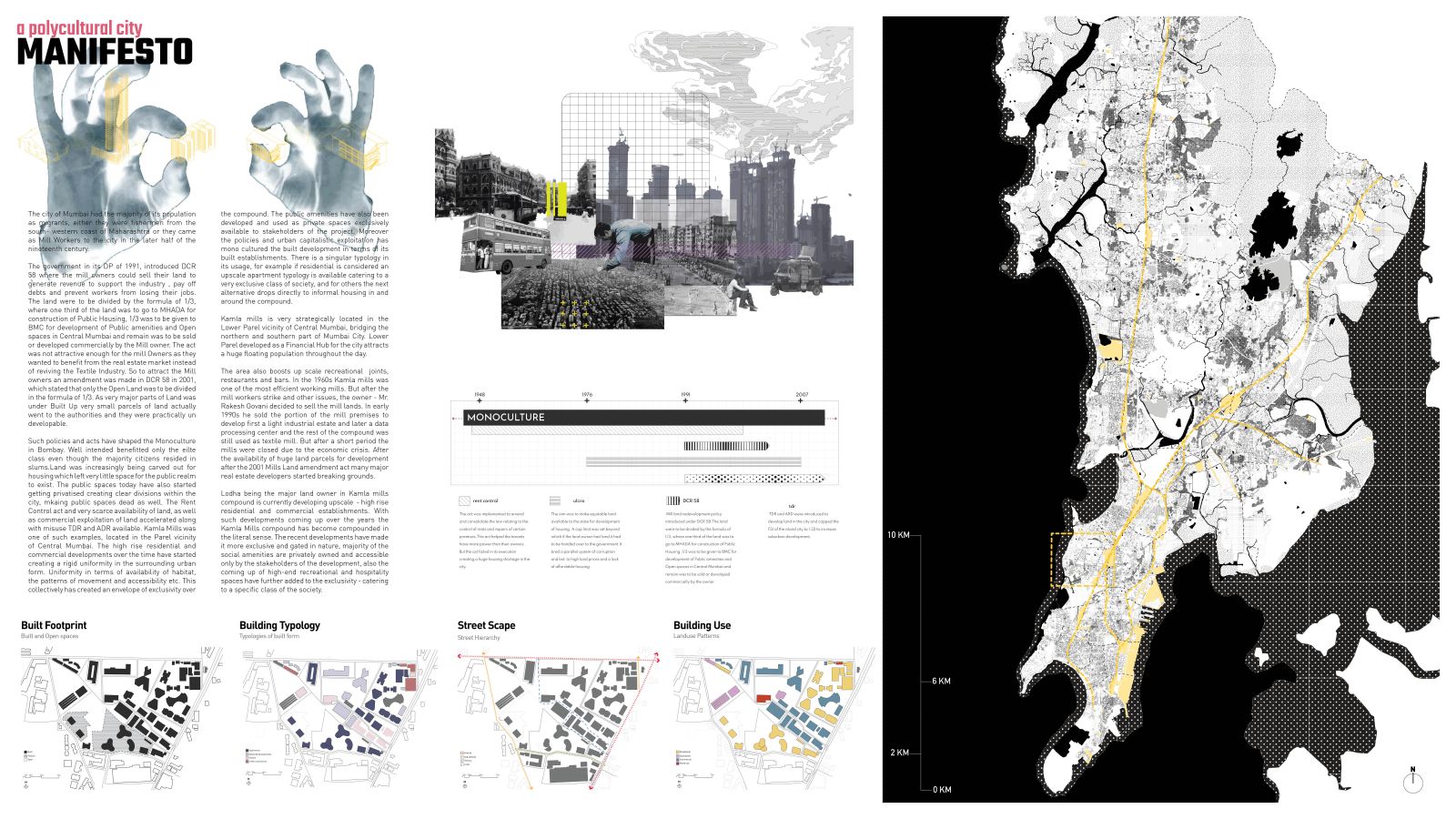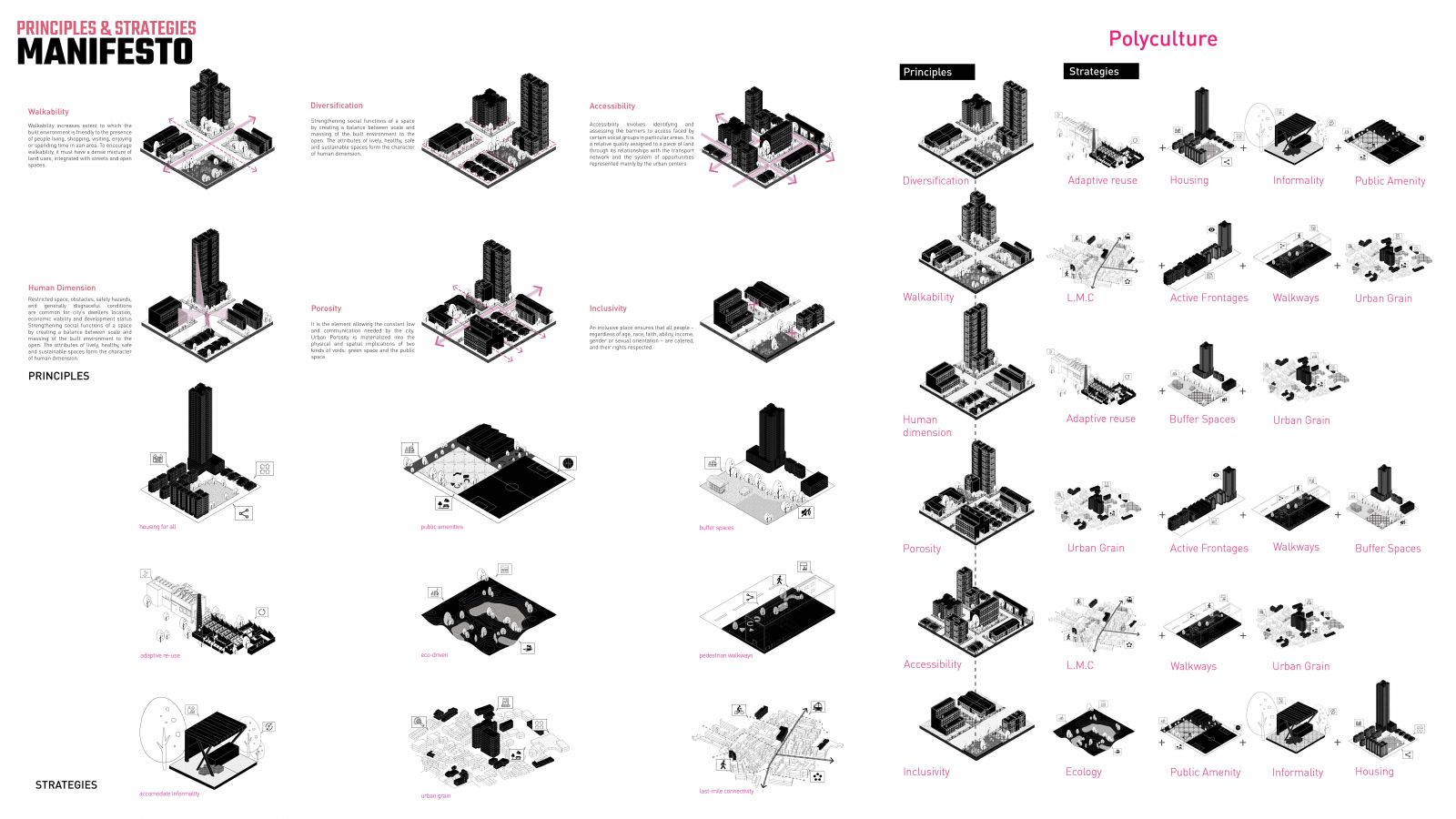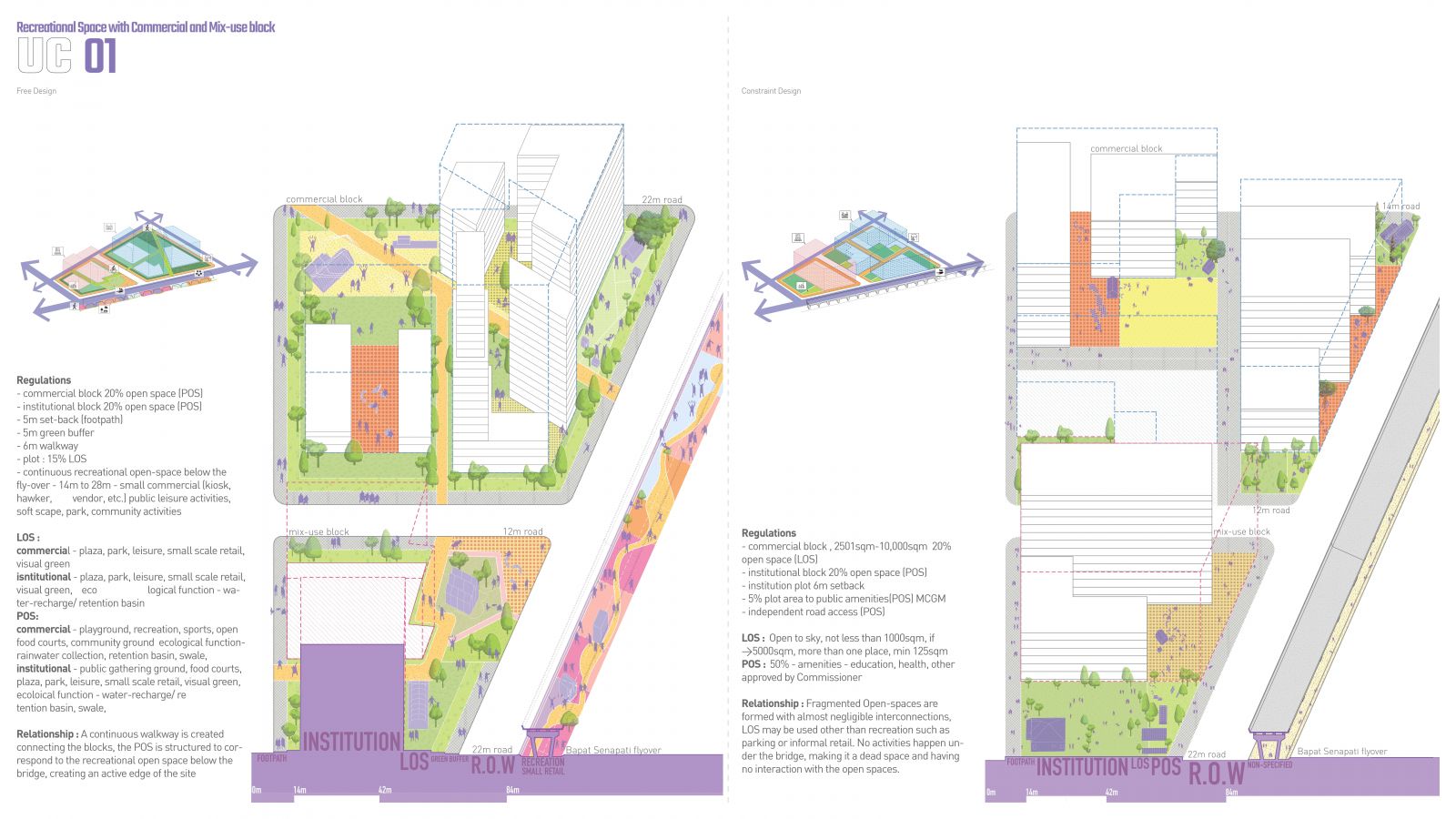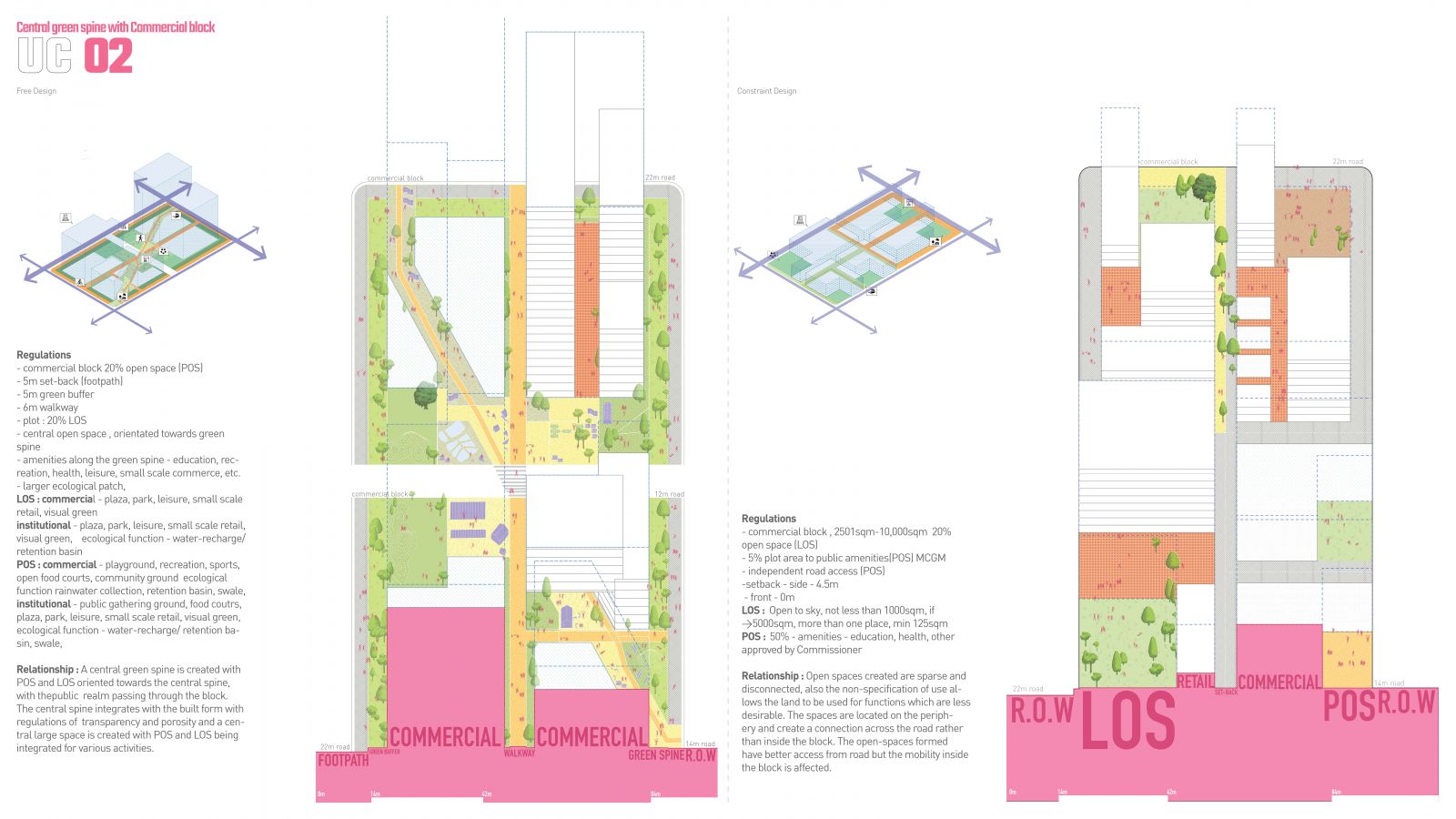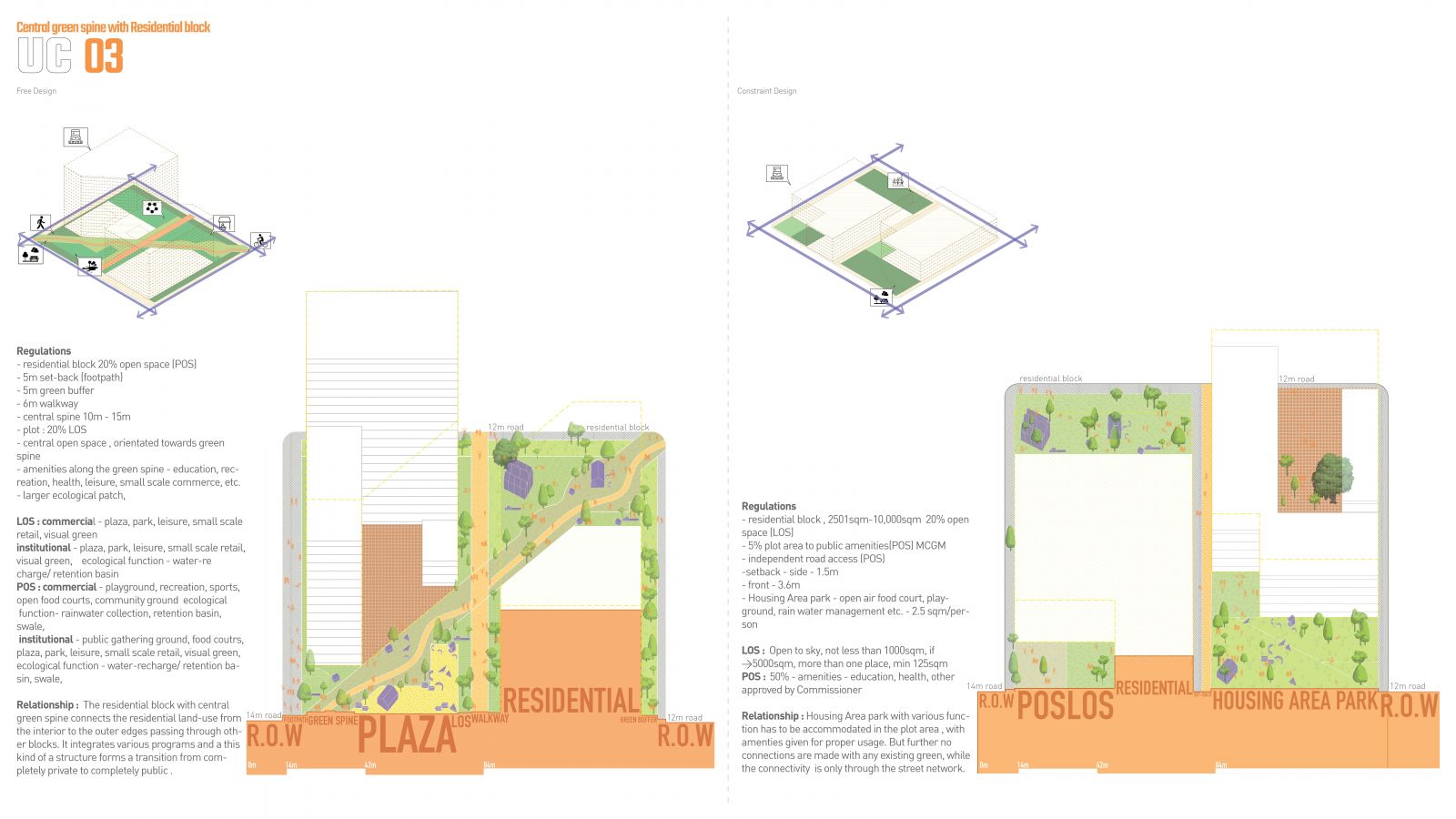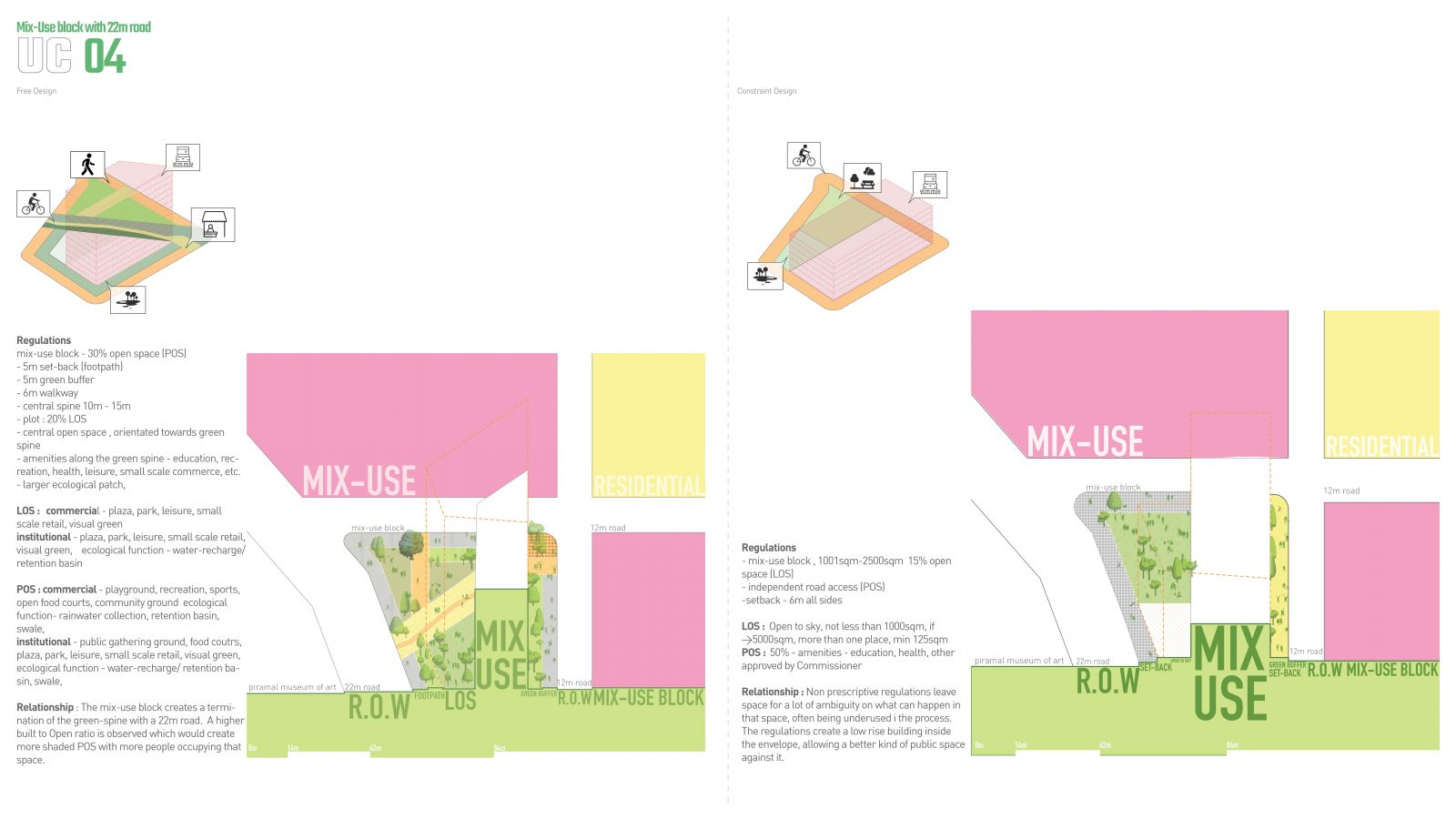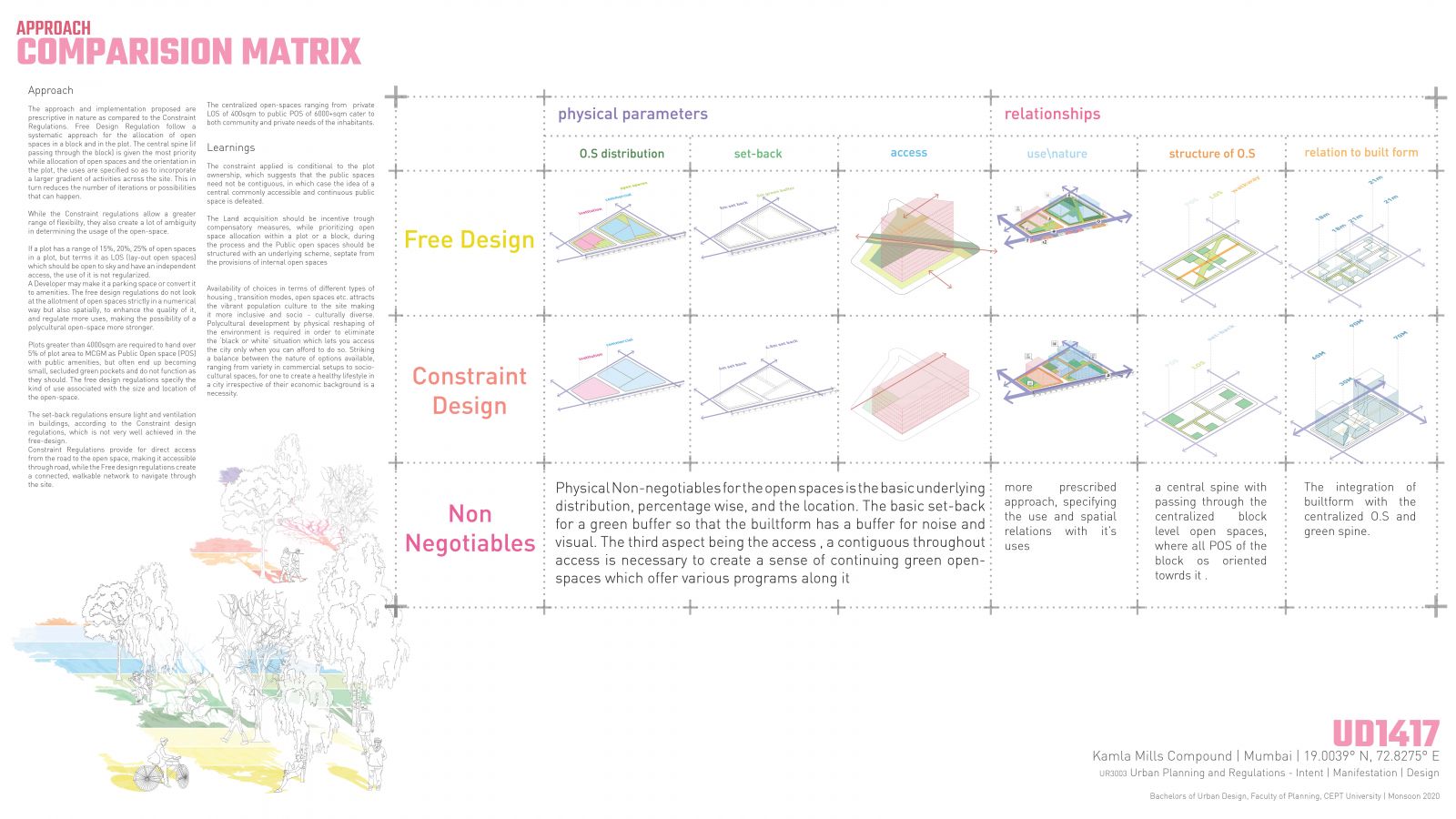Your browser is out-of-date!
For a richer surfing experience on our website, please update your browser. Update my browser now!
For a richer surfing experience on our website, please update your browser. Update my browser now!
Cities have been famously known through their architecture, and the construction of a city over time. Therefore, the built fabric. The post globalization era points out the obvious stylistic schism that has shaped our surroundings today. A monoculture has been created through this process that has now become the public image of the city, which also manages to hide some of its biggest problems existing today. Thus, a physical reshaping of the environment is required in order to provide more choices to the citizens in terms of housing, open spaces, and transit network, in order to eliminate the ‘black or white’ situation which lets you access the city only when you can afford to do so. Striking a balance between the nature of options available, ranging from variety in commercial setups to socio-cultural spaces, for one to create a healthy lifestyle in a city irrespective of their economic background is a necessity. This project looks at the idea of polyculture through open spaces in the context of kamla mills compound,and how it can be achieved through policies and regulations.
